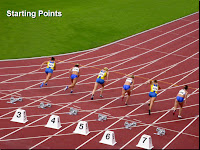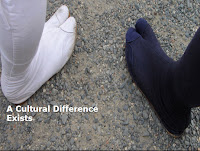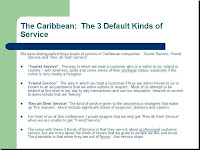Awhile ago I gave a presentation that seemed to be a good one. The crowd’s reaction was strong to the half-hour presentation, and a few people came up to find out more about our company and what it was doing in the region.
However, one woman went a bit further, and made a complaint. She said that the slides could be improved, and offered her help to make them better.
I was a bit taken aback. Although my PowerPoint presentation had been put together on the plane on the morning of the presentation, I thought that I had done a creditable job in putting some words together that would help people see what I was saying more clearly.
After all, most of the other people who spoke did not even have slides that were tailored to the conference material, so I considered myself a step above.
A year later, the presentation I gave is almost embarrassing to me, and I can never do such a presentation again.
Her comment moved me to be open to some new approaches, and when I can across a book by Jerry Weisman called ______________ and a blog called PresentationZen, I knew that it was time for a radical upgrade in the way I presented my materials.
Here is one of the slides from the presentation entitled “Using the Service Inventory to Create the Customer Experience” delivered in October of 2005.
Contrast that with a slide I presented at a recent speech I gave at a client’s internal meeting in November of 2006:
While I don’t intend to go into the different reasons for using a slide like this one in this blog entry, I can say that I have found that a slide like the one above touches an audience in very different ways, and at many levels.
The tendency of most speakers is to read from slides that are dense with information, and the content acts as a crutch for those who are insecure about getting lost in the presentation.
When the slide is used to make both an emotional point and a logical point, the impact is quite different, and the speaker interacts with the slide as an aide to the larger point that he/she is attempting to make, and to the intended result of the presentation.
Here is another example:

The point here is that slides are playing a different role in my presentations, and one that I think would be more interesting and emotionally compelling to the audience.
What a distance to come.
One caveat is that it no takes several hours of preparation to get the right combination of images and words to produce the intended result of the presentation. Finding the right image is no easy task, and it takes hours of looking at hundreds of pictures that do not fit the bill to find a handful that do. Sometimes, the search is fruitless and I have to resort to words. Often, the images are not Caribbean enough, as there are very few pictures reflecting the primarily African-Indo blend that we have in the English-speaking region.
Given that presentations are an important tool in the work I perform, making this shift has been gratifying, and hopefully my audiences have benefited from the change. Kudos to the unnamed and unknown woman who gave me a wake-up call a year ago.

